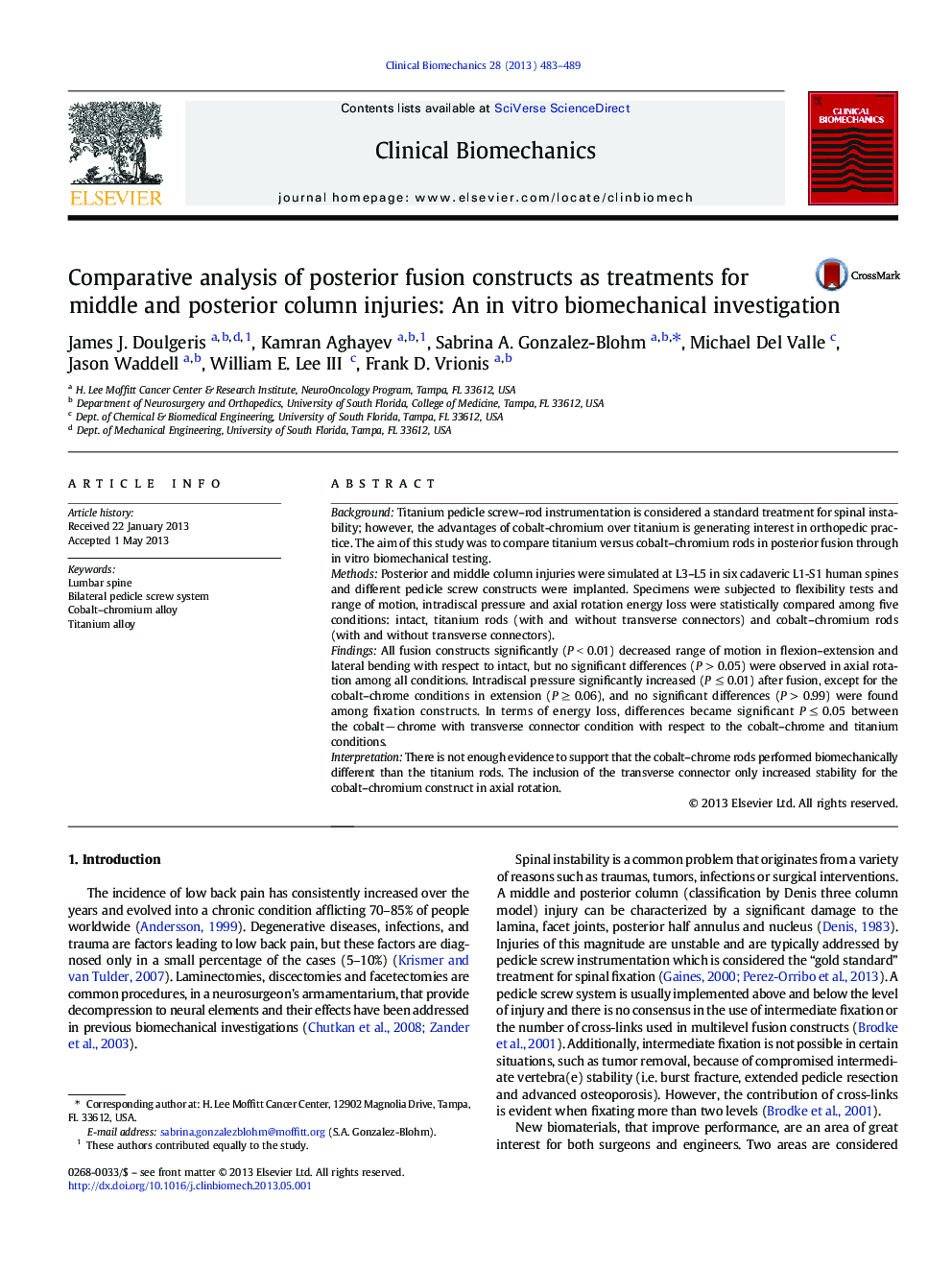| کد مقاله | کد نشریه | سال انتشار | مقاله انگلیسی | نسخه تمام متن |
|---|---|---|---|---|
| 4050692 | 1264952 | 2013 | 7 صفحه PDF | دانلود رایگان |

BackgroundTitanium pedicle screw–rod instrumentation is considered a standard treatment for spinal instability; however, the advantages of cobalt-chromium over titanium is generating interest in orthopedic practice. The aim of this study was to compare titanium versus cobalt–chromium rods in posterior fusion through in vitro biomechanical testing.MethodsPosterior and middle column injuries were simulated at L3–L5 in six cadaveric L1-S1 human spines and different pedicle screw constructs were implanted. Specimens were subjected to flexibility tests and range of motion, intradiscal pressure and axial rotation energy loss were statistically compared among five conditions: intact, titanium rods (with and without transverse connectors) and cobalt–chromium rods (with and without transverse connectors).FindingsAll fusion constructs significantly (P < 0.01) decreased range of motion in flexion–extension and lateral bending with respect to intact, but no significant differences (P > 0.05) were observed in axial rotation among all conditions. Intradiscal pressure significantly increased (P ≤ 0.01) after fusion, except for the cobalt–chrome conditions in extension (P ≥ 0.06), and no significant differences (P > 0.99) were found among fixation constructs. In terms of energy loss, differences became significant P ≤ 0.05 between the cobalt − chrome with transverse connector condition with respect to the cobalt–chrome and titanium conditions.InterpretationThere is not enough evidence to support that the cobalt–chrome rods performed biomechanically different than the titanium rods. The inclusion of the transverse connector only increased stability for the cobalt–chromium construct in axial rotation.
Journal: Clinical Biomechanics - Volume 28, Issue 5, June 2013, Pages 483–489